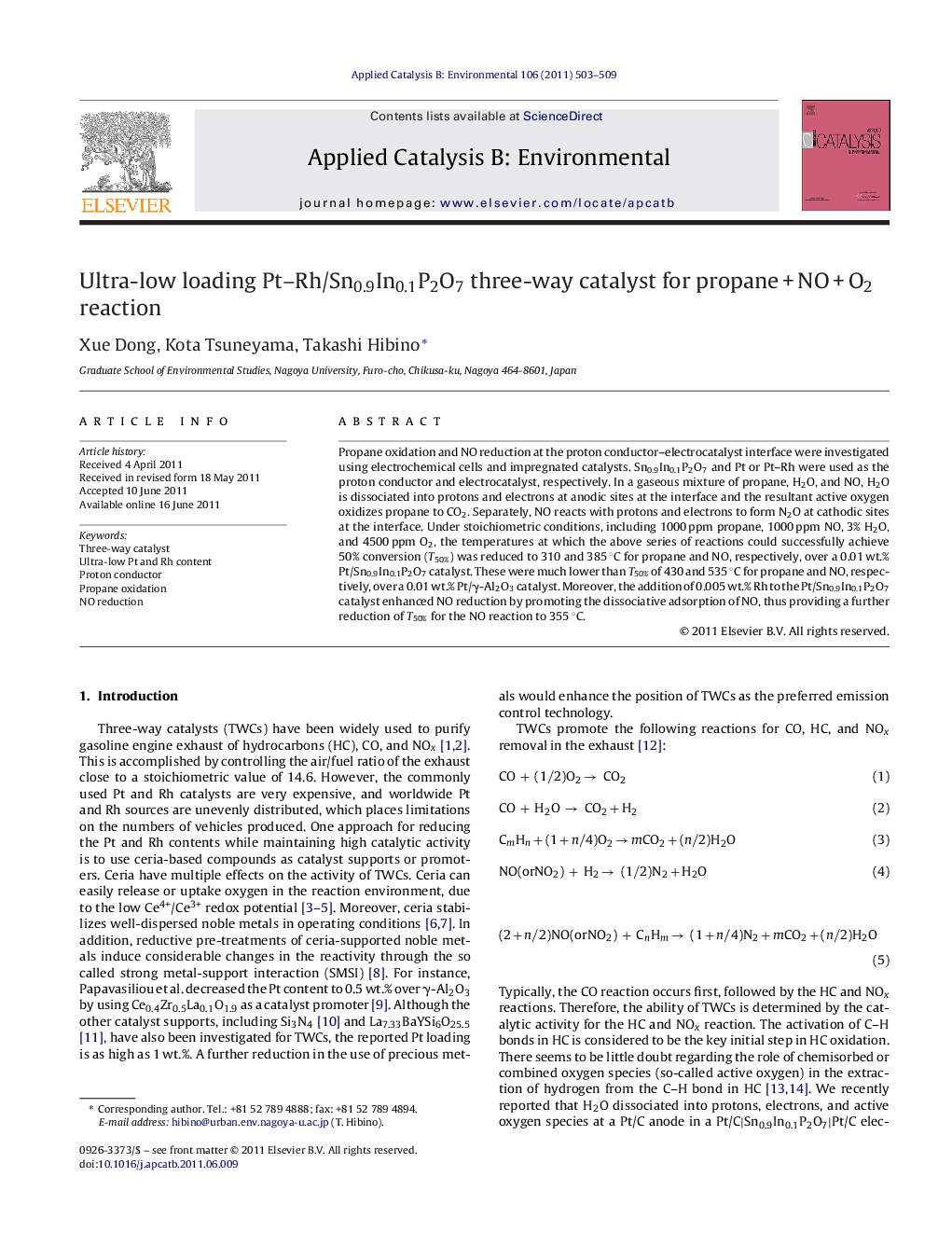| Article ID | Journal | Published Year | Pages | File Type |
|---|---|---|---|---|
| 46928 | Applied Catalysis B: Environmental | 2011 | 7 Pages |
Propane oxidation and NO reduction at the proton conductor–electrocatalyst interface were investigated using electrochemical cells and impregnated catalysts. Sn0.9In0.1P2O7 and Pt or Pt–Rh were used as the proton conductor and electrocatalyst, respectively. In a gaseous mixture of propane, H2O, and NO, H2O is dissociated into protons and electrons at anodic sites at the interface and the resultant active oxygen oxidizes propane to CO2. Separately, NO reacts with protons and electrons to form N2O at cathodic sites at the interface. Under stoichiometric conditions, including 1000 ppm propane, 1000 ppm NO, 3% H2O, and 4500 ppm O2, the temperatures at which the above series of reactions could successfully achieve 50% conversion (T50%) was reduced to 310 and 385 °C for propane and NO, respectively, over a 0.01 wt.% Pt/Sn0.9In0.1P2O7 catalyst. These were much lower than T50% of 430 and 535 °C for propane and NO, respectively, over a 0.01 wt.% Pt/γ-Al2O3 catalyst. Moreover, the addition of 0.005 wt.% Rh to the Pt/Sn0.9In0.1P2O7 catalyst enhanced NO reduction by promoting the dissociative adsorption of NO, thus providing a further reduction of T50% for the NO reaction to 355 °C.
Graphical abstractFigure optionsDownload full-size imageDownload as PowerPoint slideHighlights• Propane oxidation and NO reduction at the interface of a proton-conducting Sn0.9In0.1P2O7 and a Pt electrocatalyst were investigated. • H2O dissociated into protons and electrons at an anodic site of the interface and the resultant active oxygen oxidized propane to CO2. • NO reacted with protons and electrons to form N2O at a cathodic site of the interface.
